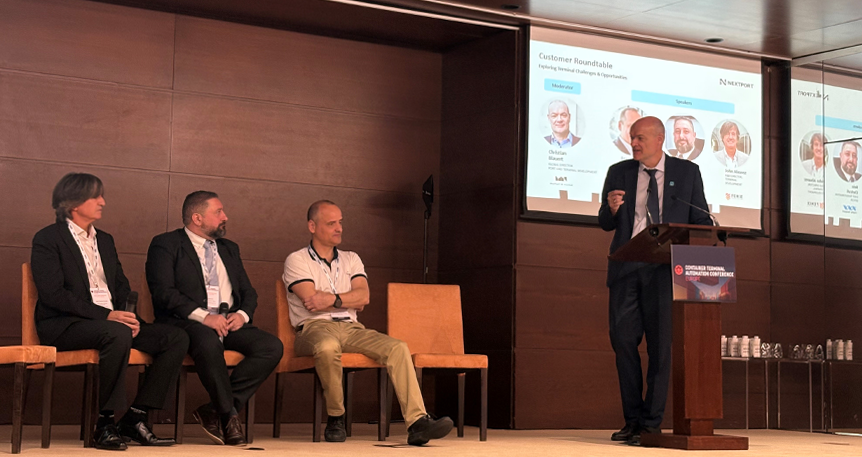Terminal operators pioneering the use of NextPort have shared with the industry how it is improving their operations.
Speaking at the Container Terminal Automation Conference (CTAC) in Valencia, Spain, three operators discussed their different stages of integration of the NextPort solution and the results they are already seeing.
Clients noted that the technology functions as an augmentation layer, enhancing operational efficiency, simplifying troubleshooting, and ensuring information is easier to obtain and apply effectively – in addition to feedback into the system to enable continuous improvement and learn from troubleshooting.
Clients also noted that the industrialization capabilities were important, so they could scale up.
Hein Chetcuti, Chief Transformation Officer, Malta Freeport told the conference that previously the terminal had suffered from congestion. “We could resolve 50% of the problem but the other 50% was proving impossible. No one was able to understand what was happening,” he said.
Malta Freeport had already started working with NextPort, but took the decision to harvest the data collected to create a holistic picture of what was happening at the terminal, rather than looking at data in silos.
“We decided to use the data in the control room to start uncovering what the TOS was not telling us,” he said.
From that, they were able to understand and address how human behaviors were impacting operational efficiencies.
“We’re uncovering things that were previously unseen. These include situations where the TOS has dispatched the task to the machine, but an issue with an operator had delayed implementation. We’ve now been able to address that issue, which would normally be unseen. With NextPort, the machine has spotted something unexpected and created an alert,” said Hein.
Using the insight, they have been able to educate the team to reduce operational inefficiencies. “It’s nice to talk about AI, which will happen of course, and this platform is the foundation for that, but at the same time we have started understanding and educating people by showing them their behaviors,” said Hein.
Meanwhile, John Alvarez, Research and Development Director, Fenix Marine Services, explained to delegates at the conference terminal complexity creates a monitoring challenge.
“We have a very typical commercial operation, utilizing up to 20 RTGs, 50 Top handlers and 150 UTR. We rely heavily on process automation. For this work, every single machine needs to send the information every single time, all the sensors need to be working, and how can you monitor that manually? It’s almost impossible. The only way to do that is to have this type of tool. With the real time monitor, it tells us if something is failing, so it’s very important.”
At the same time, he said they value the data that is being generated which enables insights into continuous improvement. “You cannot improve what you cannot measure, so the first thing we need to do is measure what we have and try to improve that. If you don’t have these tools it’s almost impossible.”
At CMA CGM, the company is already implementing NextPort in three terminals and looking to expand it into 10.
Francisco Blanquer, R&D Senior Manager, CMA CGM said: “We needed to create it into an industrial product for many terminals, so we needed something at we could copy and paste. We’re already in implementation in three terminals, but this year we’re going to start implementing it in ten. Scaling this up is the key for us.”









